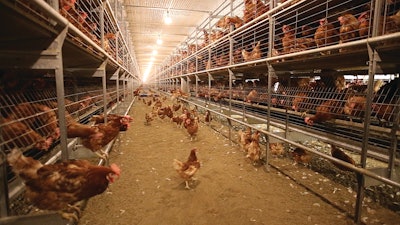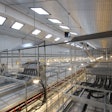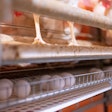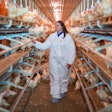
Installing a recirculating electrostatic precipitator could help improve air quality and reduce dust concentrations in cage-free layer houses.
“High dust levels can affect the performance and welfare of the birds and workers. Since workers spend more time inside cage-free layer houses collecting floor eggs than in caged-layer houses, they are exposed to high dust levels for longer,” Sanjay Shah, professor, Department of Biological and Agricultural Engineering, North Carolina State University, said.
Increased activity in cage-free layer houses can be beneficial to the birds, but the dust generated during bird movement can have negative impacts on air quality.
“Conventional dust filtration is not used in cage-free layer houses because filters clog rapidly, requiring excessive maintenance,” he added, noting that this makes dust reduction an even greater challenge.
Charging dust to remove it
When an electrostatic precipitator electrically charges dust particles, these particles are attracted to charged plates and removed from the environment, which in this case is a cage-free layer house.
“In this study, the charging and collecting electrodes were housed inside a structure and the collector was shaken automatically to transfer the dust into a bag for removal, thereby eliminating the need for manual cleaning,” Shah explained.
In addition, “unlike other electrostatic precipitators, this design had its own blower that could provide air mixing to reduce thermal stratification in the house,” he said.
The electrostatic precipitator used in the study also contained a germicidal ultraviolet-C (UV-C) lamp, which targeted bacteria in the environment.
According to research funded by a grant from the U.S. Poultry and Egg Association (USPOULTRY), the recirculating electrostatic precipitator reduced thermal stratification (floor to ceiling temperature difference), dust and microbial concentrations.
Future tweaks of the electrostatic precipitator design could further improve dust and bacteria removal, Shah hypothesized.



















